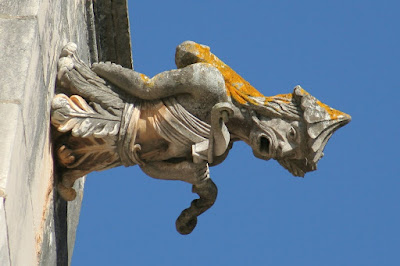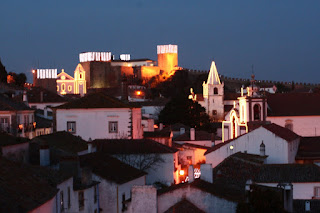
Armillarsphäre
Die in Babylon und Griechenland erfundene Armillarsphäre ist eines der ältesten astronomischen Geräte. Es handelt sich dabei um mehrere Metallringe (im Latein
armilla = Armband), die zusammen die Form einer Sphäre bilden und die Grosskreise der Himmelskugel (Äquator, Ekliptik, Breitenkreise und Meridiane) repräsentieren. Bis zum späteren Mittelalter ist die Armillarsphäre im Privatbesitz der arabischen Astronomen geblieben, die sie einst von den alten Griechen übernommen und weiter entwickelt hatten. Erst im 15. Jh. wurde sie in Europa bekannt, wo sie auch ihre höchste Entwicklung erreichte. Obwohl sie infolge der Erfindung des Teleskops als Beobachtungs- und Messinstrument viel an Bedeutung verloren hat, blieb die Armillarsphäre immer ein Symbol der Weisheit und des Wissens. In Portugal ist sie seit der Regierungszeit des Königs Manuel I. (1469-1521), der sie zu seinem persönlichen Emblem erwählte, eines der wichtigsten Nationalsymbole, und wird noch heute in stilisierter Form als Sinnbild des grossen Epos der portugiesischen Entdeckungen auf der Nationalfahne dargestellt.
Esfera armilar
A esfera armilar é um dos instrumentos astronómicos mais antigos, tendo as suas origens na Babilónia e na Grécia. Trata-se de uma representação da esfera celeste, constituída por uma série de aros metálicos graduados (lat. armilla = pulseira) que representam o equador, a eclíptica, os meridianos e os paralelos. Até finais da idade média manteve-se na posse dos astrónomos árabes, que muito a aperfeiçoaram, só tendo sido divulgada na Europa no séc. XV, onde atingiu o seu máximo desenvolvimento. Embora com o aparecimento do telescópio a esfera armilar tenha perdido a sua importância como instrumento de observação e medição, continuou a ser utilizada como símbolo de sabedoria e conhecimento. Em Portugal, é um dos mais importantes símbolos nacionais desde o reinado de D. Manuel I, que a elegeu como emblema pessoal, e está ainda hoje presente de forma estilizada na bandeira nacional, evocando a epopeia marítima portuguesa.
Armillary sphere
The armillary sphere is one of the oldest astronomic instruments, originally from Babylon and Greece. It represents the celestial sphere with the different mettalic graduate rings in the place of the Equator, the ecliptic, the meridians and the parallels. Until the end of the Middle Age it was only known to the arabian astrologers, who perfected it. It was not until the 15th century (1436-1476), when it arrived to Europe, that the sphere was fully developed. With the use of the telescope, the armillary sphere lost its role as an observation and measuring instrument, but it was still used as a symbol of erudition and knowledge. In Portugal it is one of the most important national symbols, since the reign of King Manuel I, who chose it as his personal emblem. Up to today it is part of our flag, reminding us of the portuguese Golden Age during the discoveries period.
Sfera armillare
Scoperta nella Grecia antica, la sfera armillare è uno dei più antichi strumenti astronomici. È costituita da una serie di anelli metallici (in latino armilla = braccialetto) raffiguranti i cerchi massimi della sfera celeste (equatore, eclittica, meridiani e paralelli), il cui assieme descrive una sfera. Fino al periodo tardomedioevale è rimasta proprietà privata degli astronomi arabi, che ricuperandola dai greci l’avevano perfezionata. Solamente nel secolo XV fu divulgata in Europa, dove infatti raggiunse il suo massimo sviluppo. Benché dopo la scoperta del telescopio abbia perso la sua importanza come strumento di osservazione e di misura, la sfera armillare è rimasta un simbolo della saggezza e della conoscenza. Nel Portogallo costituisce uno dei più importanti simboli nazionali sino dal regno di Manuel I, che la scelsi come emblema personale, ed è ancora oggi presente in una forma stilizzata nella bandiera nazionale, rappresentando la grande epopea delle scoperte portoghese.






































